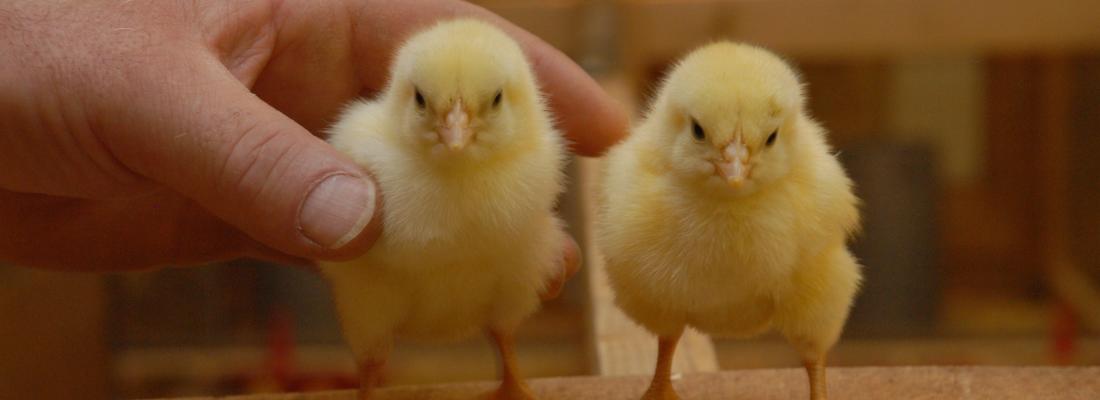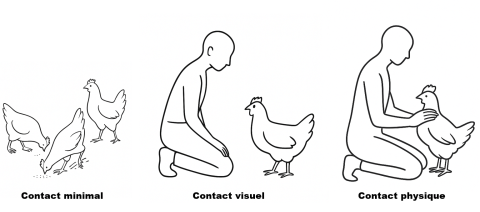Agroecology Reading time 6 min
Can chickens take a positive view of humans?
Published on 08 July 2025

In some domestic mammals under stress, humans can play a reassuring role. What about birds, particularly chickens? A recent study looked into this question: can hens perceive humans as positive figures, and not simply as sources of stress?
To find out, the researchers worked with two breeds of laying hens: Lohmann LSL Classic (with white feathers, more active and nervous) and Lohmann Brown Classic (with brown feathers, more docile and calmer). The hens were subjected to three types of human interaction for 13 days:
- No contact (noC): little human interaction.
- Visual contact (CVis): one person (always the same person) entered the hen house each day for one to two minutes without touching the animals.
- Physical contact (CPhys): all the hens were gently handled and stroked for the same length of time each day by the same person.

The effects of these interactions were then assessed using behavioural and cognitive tests.
Hens calmer in the presence of humans
The separation-reunion test consisted in placing each hen alone in an unfamiliar room, and then letting the person concerned enter with CVis and CPhys. The results were clear: the hens that received physical contact (CPhys) showed more calm behaviour and were more exploratory in the presence of the human. Conversely, the hens in the noC group showed more stress-related behaviour. Brown hens were generally calmer and closer to humans than white hens.
Hens that are easier to catch
A capture test was then carried out: how many attempts does it take to catch each hen? The result: the hens in the CPhys group, particularly the browns, were easier to catch. The white hens and those in the noC treatment were more elusive, which complicates the task of handling them on the farm.
Hens capable of following human gestures
Finally, a cognitive test was used to assess the hens' ability to locate food using a human pointing gesture. Some of the hens in the CPhys group, particularly the brown ones, were able to follow the direction indicated by the human and find the reward. This suggests that positive interaction facilitates attention to human signals.

A human-animal relationship that needs to be enhanced
This study shows that hens are not indifferent to the quality of human contact. Some can even find comfort in their presence, provided they have had positive experiences beforehand. This opens up interesting prospects for breeding: regular human contact, however brief, can promote animal welfare while simplifying certain tasks for breeders.
Breed also plays a key role: breeds with a reputation for being more docile seem more inclined to establish a positive relationship with humans. Adapting practices according to the sensitivity of the animals could therefore improve the quality of life on the farm, for both animals and humans.
Ongoing research: These results pave the way for further research. Thanks to the support of the ANR via the CADO project (Cognitive adaptations of domesticated birds), work will continue to better understand how domestication and selection have shaped the perception of hens, whether of their environment, their fellow birds or humans.
References : Ferreira, V.H.B.; Calesse, E.; Dumontier, L.; Cornilleau, F.; Lemarchand, J.; Foreau, A.; Quentin, M.; Lansade, L.; Tallet, C.; Boivin, X.; Calandreau, L., 2025. Chickens perceive humans as social buffers and may follow human-given cues: A pilot study. Poultry Science, 104 (7): 10. - https://doi.org/10.1016/j.psj.2025.105203
